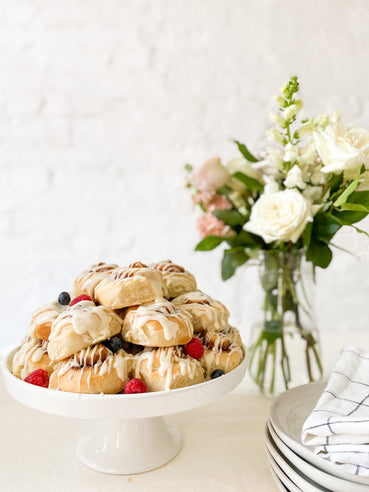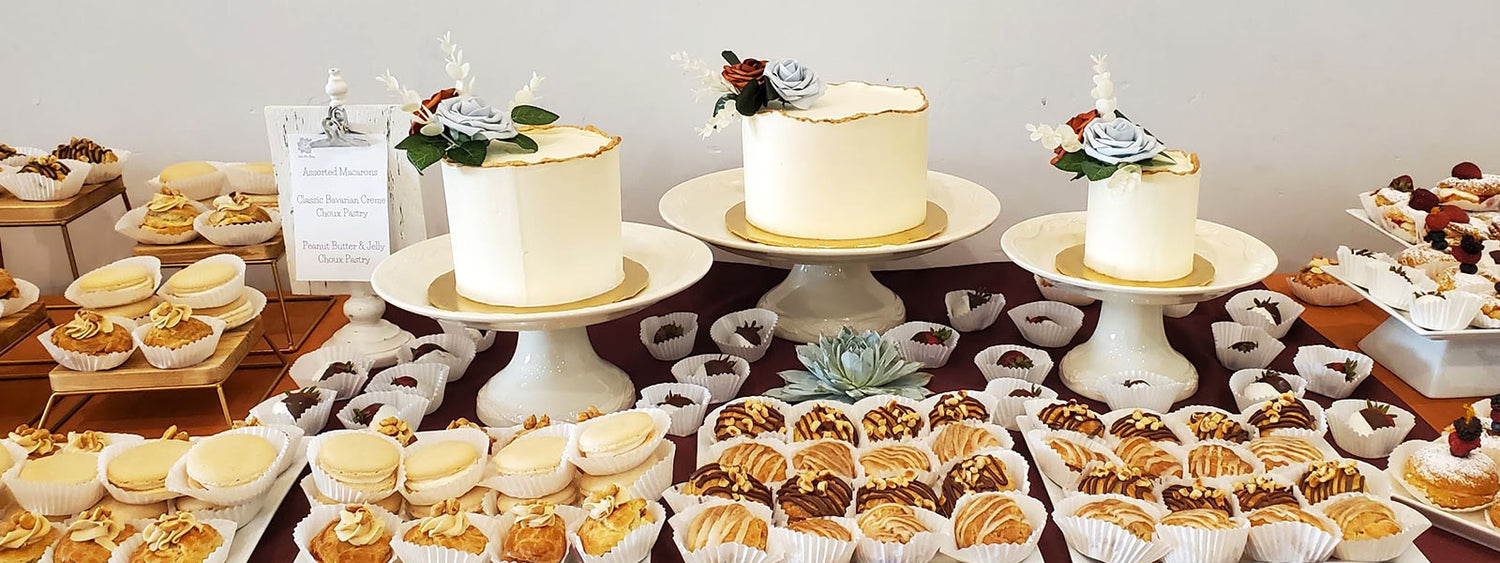Comprehending the Art of Pastry Shop Products: From Newly Baked Breads to Alluring Pastries and Finger Foods
The complex art of pastry shop products encompasses a spectrum of strategies and ingredients that change fundamental elements into cooking thrills. From the scientific research behind the best loaf of bread, where fermentation and gluten advancement play critical duties, to the finesse needed for developing split breads, each aspect discloses a compelling story of craftsmanship. Additionally, the adaptability of finger foods shows exactly how taste and structure can be artfully incorporated to involve varied preference preferences. As we check out these elements, one might wonder: what underlying principles regulate the success of these precious productions?
The Science of Bread Making
At the heart of every loaf of bread exists an interesting interplay of chemistry and biology. The process of bread making begins with the mix of flour, yeast, salt, and water-- each active ingredient playing a vital duty in the final item.
Yeast, a living organism, ferments the sugars present in the flour, creating carbon dioxide and alcohol while doing so. The co2 gas produces bubbles in the dough, causing it to increase and develop a light texture. The temperature and humidity during fermentation substantially influence yeast task and, subsequently, the bread's flavor and structure.

Learning Pastry Strategies
How can one accomplish the fragile balance of appearance and flavor that defines exceptional pastry? Understanding pastry methods calls for a deep understanding of components, approaches, and the science behind them. Essential to this craft is the option of premium active ingredients-- flour, butter, sugar, and eggs-- each playing an important duty in the end product's flavor and appearance.
The technique of lamination, which involves folding layers of dough and butter, produces the wanted flakiness in breads like croissants and puff pastry. Precision in temperature level is essential, as butter should stay chilly to make certain optimal layers. Correct blending approaches, such as the creaming technique for cakes, ensure even incorporation of air and fat, resulting in a light and airy crumb.
Additionally, preserving the ideal moisture degrees throughout cooking can dramatically influence the end result, ensuring that pastries climb correctly and attain that golden-brown coating. Ultimately, the art of bread additionally requires perseverance and method; each effort enhances one's skill and understanding of the elaborate balance required to create tempting breads that thrill the senses. Proficiency in these methods eventually differentiates a proficient bread chef from an amateur.
Sorts Of Finger Foods
The world of cooking thrills prolongs beyond breads to include a broad array of finger foods, which are commemorated for their benefit and flexibility. These bite-sized treats are best for social events, offering a selection of tastes and textures that accommodate varied palates.

On the sweeter side, miniature tarts and bite-sized cupcakes provide a wonderful surface to any kind of dish, appealing to those with a wonderful tooth. Cheese and charcuterie boards serve as a sophisticated selection, permitting visitors to personalize their useful site bites with a selection of meats, fruits, nuts, and cheeses.
Flavor Profiles in Baking
Baking is a detailed dancing of flavor profiles that incorporates pleasant, mouthwatering, and umami notes to produce a harmonious experience for the palate. Recognizing these accounts is vital for bakers seeking to boost their creations.
Sweet taste typically works as the foundation in baked items, with sugars, fruits, and natural sweeteners boosting flavor deepness. Active ingredients such as chocolate and sugar present complex pleasant notes that can either dominate or complement various other flavors. Alternatively, mouthwatering elements, usually discovered in breads and pastries, offer equilibrium and contrast. Ingredients like herbs, spices, and cheeses can transform a straightforward dough into a complex flavor experience.
Umami, often forgotten in baking, plays a considerable role in enhancing tastes. Ingredients such as aged cheeses, fermented products, and even certain nuts add to a full-flavored depth that improves total taste.
Additionally, the interaction of level of acidity from active ingredients like buttermilk or citrus zest can brighten tastes, offering a rejuvenating counterpoint to sweet taste. By attentively incorporating these flavor profiles, bakers can craft products that resonate with diverse tastes buds, producing an unforgettable culinary experience. Ultimately, grasping flavor profiles is crucial to advancement in the globe of cooking.
Essential Baking Tools and Ingredients
Recognizing taste accounts in baking sets the phase for picking the right devices and components that help with the creation of remarkable baked goods. A reliable collection of baking pans-- such as sheet frying pans, loaf frying pans, and cake pans-- is important for accomplishing desired shapes and textures.
In terms of active ingredients, quality issues substantially. Flour serves Continued as the foundation of most dishes; selecting the appropriate kind-- be it bread, all-purpose, or pastry flour-- can substantially affect the outcome. Sugar not just sweetens but additionally adds to appearance, while eggs act as binders and raising agents. Baking powder and cooking soft drink are necessary for producing lift in pastries and cakes.
Additionally, integrating flavor enhancers like vanilla essence, spices, and citrus enthusiasm can raise your developments. By ensuring accessibility to these essential tools and ingredients, bakers can with confidence embark on their cooking trip, crafting a varied range of delightful baked goods.
Conclusion
Proficiency in bread production, pastry preparation, and finger food presentation reveals the intricate relationships in between processes and active ingredients. Bakery Catering Maddington. Checking out diverse flavor profiles enriches the baking experience, while crucial devices and active ingredients supply the foundation for success.
Just how can one accomplish the fragile balance of appearance and flavor that defines outstanding pastry? Basic to this craft is the selection of top quality ingredients-- flour, butter, sugar, and eggs-- each playing a crucial duty in the final item's flavor and structure.

Understanding taste accounts in baking collections the phase for picking the right tools and components that promote the creation of outstanding baked goods. Checking out varied taste accounts improves the baking experience, while important tools and components provide the foundation for success.